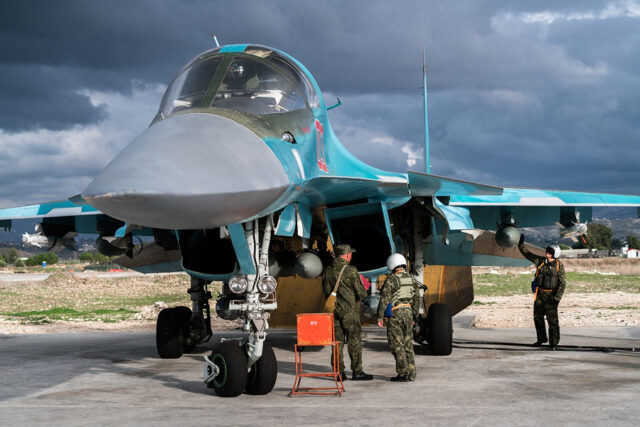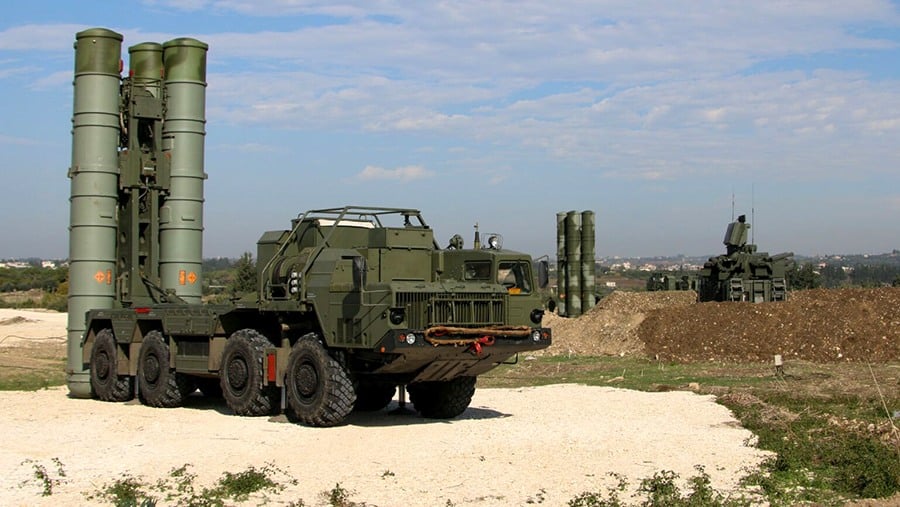The Kremlin has decided to withdraw the S-300 Faworit anti-aircraft system battery previously stationed in Syria. According to the Times of Israel, satellite photos taken by the Israeli company ImageSat International show that the battery previously stationed near the city of Masyaf in Hama muhafase in northwest Syria has been dismantled in the last few weeks. Now its task will be to defend the Crimean Peninsula or its vicinity – a region in which the Ukrainian armed forces operate more and more frequently and boldly.
In theory, the battery was a gift from Moscow to the armed forces of Bashar al-Assad, but its use was tightly controlled by the Russians. As you can see, it never even formally became the property of Syria. According to ImageSat International, the battery components were transported to the Humajmim base used by the Russians, and from there to the port of Tartus, where they were loaded onto the Sparta II ship. He circled Turkey, crossed the Black Sea Straits (he reached the Bosphorus on the night of August 24-25) and headed to Novorossiysk, where he moored today.
According to @ImageSatIntl, Russia has taken its S-300 batteries back from Syria’s Masyaf as the war in Ukraine continues. pic.twitter.com/HwoiElJhjR
– Anna Ahronheim (@AAhronheim) August 27, 2022
-ADVERTISEMENT-

Formally, Sparta II was allowed to pass through the Black Sea Straits as it is a civilian ship and the closure of the straits under the Montreux Convention only applies to ships. If Turkey is not involved in the war, the rights of passage are the same for all ships as in peacetime. Only if Turkey is involved in a war can it block the passage of ships from countries fighting it. Nevertheless, it can be assumed that the cruise was intentionally planned so that Sparta II would pass Istanbul at night and would not attract attention, which would be convenient for both Russia and Turkey.
. @ USTreasury designated [UKRAINE-EO13685], @mod_russia owned Oboronlogistika’s, civilian crewed Russian flag roro Sparta II transited Bosphorus towards Med en route from #Tartus #Syria to Novorossiysk carrying military cargo. @egetulca pic.twitter.com/fsGlSfz4i8
– Yörük Işık (@YorukIsik) August 27, 2022
It was this S-300 battery (probably representing a relatively modern version of the S-300PMU-2) in May this year that opened fire on Israeli aircraft on a combat flight over Syria. The system was deployed near Masyaf in autumn 2018.
Ironically, on August 25, the Israeli air force attacked a target in the city of Masyaf itself, a research facility that, according to leaks from intelligence sources, was producing medium-range ballistic missiles. The effect of the raid was devastating, after two hours at night you could still hear secondary explosions, and in the morning even helicopters and fire-fighting planes were involved in fighting the fire. The Israelis probably knew that Masyaf was no longer under the Russian umbrella, which is why they decided to attack a de facto undefended target. In fact – because the Syrian anti-aircraft defense tried to respond, albeit with little success, as seen below.
Syrian Air Defense missile misfires during Israeli airstrikes in Masyaf. pic.twitter.com/wFEVARGaMo
– Doge (@IntelDoge) August 25, 2022
For now, it is difficult to guess where exactly the “Syrian” battery will be deployed. For Russians, the most important place for defense at the moment near Crimea is the bridge over the Kerch Strait. But precisely because of its importance, it can be assumed that it will be defended by the most modern Russian systems (S-400, S-350, Buk-M2), while the S-300 is rather to ease one of such systems in the less sensitive sector. It is also worth allowing the hypothesis that the battery is to operate in the ground-to-ground mode, like other batteries of this type, for at least last month. Russian ballistic and cruise missile stocks are dwindling at an alarming rate, and stocks must be pulled from the Pacific. The S-300 missiles are only erzac, but they can be used to terrorize civilians.
Ukraine says that Russia has only 45% of its missiles left in stock
The depletion of Russia’s Iskander missiles is especially acute, as it only has 20% of its stocks remaining, and Kalibr missile stocks have also dwindled. This mirrors warnings from Western intelligence agencies
– Samuel Ramani (@ SamRamani2) August 27, 2022
The transfer of the S-300 to Syria was probably a direct reaction to the mistaken shooting down of the Russian Il-20M reconnaissance aircraft by the local anti-aircraft defense. It happened during one of the regular Israeli air raids on Syria. Fifteen Russian pilots lost their lives. Initially, the French frigate Auvergne of the Aquitaine type was accused, but it soon became apparent that the Syrian S-200 Wega battery was to blame, the crew of which wanted to open fire on Israeli F-16s leaving Syrian airspace after hitting targets at the Latakia, Tartus and Hims muhafases .
The Russian regime of state terrorism fired six S-300 missiles at Mykolayiv, Ukraine.
The Russians are so fanatically determined to kill Ukrainians that they fire surface-to-air missiles at ground targets. # RussiaIsATerroristState pic.twitter.com/WRpUC2gSO5
– Michael MacKay (@mhmck) July 9, 2022
After this tragic mistake, decision-makers in Moscow apparently decided that it would be safer for both Russians and Syrians if the former were to protect Syrian airspace. It is known that a small number of Syrian troops have been trained to assist in operating the system, but have never been allowed any apparent independence.
The evacuation of the S-300 from Syria is another sign of Russia’s withdrawal from the Mediterranean basin and the weakening of its influence in the Middle East – after the recall of Marshal Ustinov’s cruiser to the home base in Severomorsk, which we described a few days ago. Admittedly, someone might object that the battery was useless, since the Israelis were raving over Syria as if they were in their own backyard, but it should also be borne in mind that this was happening with silent (and sometimes completely open) consent from Russia. Jerusalem and Moscow developed a kind of symbiosis for each other so that each country could pursue its own strategic goals without parading the other.
The Russian anti-aircraft battery was something of a guarantor of the contract. If the Israelis began to go beyond its limits, the Russians would have a tool to counteract it. But of course, on the other hand, Israel also had a set of guarantors of its own, such as the Rampage cruise missiles. It is still a very mysterious weapon, the range is mostly unknown, but the most common estimate is at least 150 kilometers. It is known that his combat debut took place in April 2019. Neutralizing the “Syrian” S-300 system would not pose a difficult challenge for the Israelis, but firstly – it might not be possible without its own losses, and secondly – escalating the conflict with, after all, the nuclear power is a risky game.

Russian Su-34 at Humayimim base.
(mil.ru)
It was therefore convenient for both countries to keep this fragile pact. Therefore, a sensation aroused the firing of a missile at Israeli planes. When the case came to light, Defense Minister Beni Ganc assured that no Israeli aircraft had been hit, that there were no planes at all near the launch pad, and that it was a one-off incident. It follows that the Russians wanted to “prove” to Assad and his associates that Moscow is trying to help the authorities in Damascus to defend the sovereignty of the Syrian sky. The anti-aircraft system was launched on display, deliberately so that the Israelis did not lose a hair.
In all this, however, there is an important point to bear in mind: Russian air defense has not been completely withdrawn from Syria. The Humajmim bases are defended by the fully Russian – operated and controlled only by the Russians – the battery of the S-400 Triumf system. This one never opened fire on Israeli planes.
See also: A new generation Japanese fighter with Great Britain, not the USA?
Mil.ru

